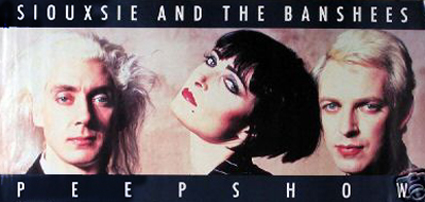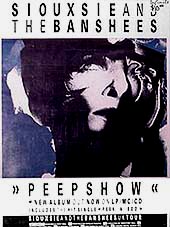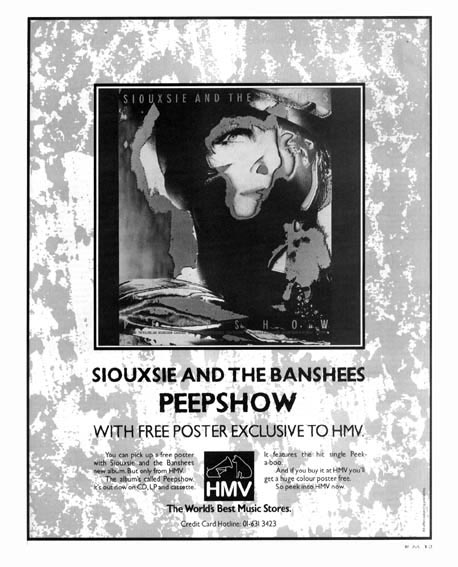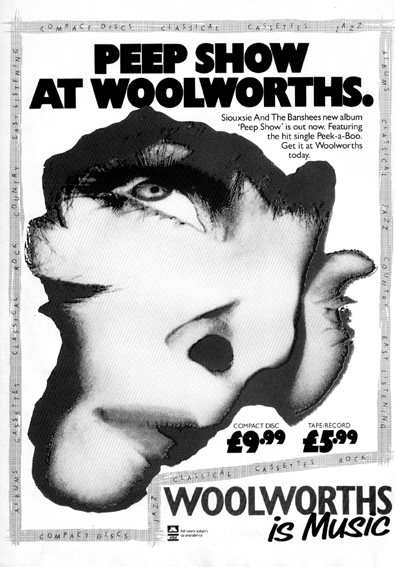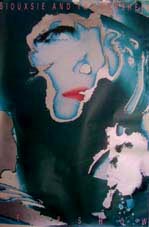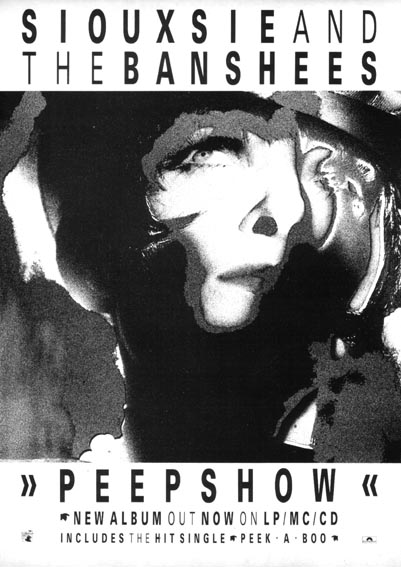|
"For the first time," explains
Steve Severin, "we've done an album with a black-and-white
structure and allow the listener to color the edges. We leave more to
the imagination now. It isn't a deluge of sounds or textures. You can
understand the melodies immediately. Perhaps we've put off people in the
past because they were too hard to grasp. This album is more like a
spider in its web. It traps people first, then if they listen closer
they can get into the lyrics or the sounds coming out of far
corners."
On Peep Show, their tenth album overall and
fourth on Geffen Records, Siouxsie & The Banshees are discovering
the joys of simplicity. (Peep Show is The Banshees' eighth album
of original material. They've also had one covers album, Through The
Looking Glass, one compilation album, Once Upon A Time - The
Singles and one double live album, Nocturne.)
Bass player and songwriter Severin, who co-founded the
band twelve years ago with singer-songwriter Siouxsie Sioux, says that
the band had recently come to a turning point. "We took a fairly
lengthy time to re-evaluate what we were trying to do and to see if we
wanted to continue. So we took a break, something we hadn't done for a
long while, and we realized that something had to change."
The final change was not an unusual one for this
band--jettisoning its latest guitarist. Siouxsie & The Banshees have
had nearly as many guitarists as albums. The newly-enlisted replacement
is Jon Klein, formerly of Specimen, a band which emerged from London's
nocturnal Bat Cave Club.
"We chose him because he didn't have any ego
problems. Most lead guitarists have a primadonna attitude. But Jon was
more into being a sound within a group. He didn't want to dominate the
structure of the songs. He was comfortable being one element in
five."
That's right, five. Siouxsie & The Banshees is now
a quintet. Prior to Jon joining, Siouxsie, Severin and drummer Budgie
had already added Martin McCarrick on keyboards and cello to the lineup.
McCarrick was familiar to the band, having worked on their string
sessions over the past few years. They became acquainted with him
through his work with Marc Almond with whom he performed in the bands
Marc and the Mambas and The Willing Sinners. McCarrick was a crucial
addition according to Severin.
"We needed to expand, to broaden the sound and
give us more options. We had always been shy of keyboards and strings
before because we know we couldn't do them live. Performing we weren't
sure whether the part we were playing was actually for a guitar or a
piano half the time. Having Martin has made a lot of difference."
Following a short U.S. tour last year, the band
retreated to a small village in the English countryside to get to know
one another, to discover if they could write songs together, and most
importantly, to determine the next step for one of the rare bands which
was born in the musical tumult of the mid-'70's and still survives
today.
That step resulted in Peep Show. Continues
Severin, "We made a conscious effort to strip the music down. We
had been involved too much in sound for a couple of albums. For this
album, we worked on songs, songs that we played and created in the
studio, and not just bringing constructed pieces into the recording
sessions. The fact is some of our best material has been on the B-sides
of singles or songs we put on an album at the last moment. We wanted to
do that this go-around for an entire album."
Their 1987 album, Through The Looking Glass,
consisting wholly of covers of other artists' material, helped pave the
way for Peep Show.
"It forced us to check out a lot of songs from
other people and see how they were constructed. They were really simple
songs. Unadulterated. Three or four chords. That experience made us look
at how we write, that maybe our songs should be more straight forward.
From that point of view it was a really excellent project."
While the songs on Peep Show (produced by Mike
Hedges and the band) are still indelibly pressed with the Banshees'
trademark quirkiness and darkness, and though they still employ words
and sounds in totally unexpected combinations, it is clearly the band's
most accessible album to date.
"It shows different sides of ourselves, which
we've never displayed in one place before. You can hear them on B-sides
or spread out over a few albums but not the best of these styles on one
album. There's the very big, grand song like 'Rhapsody' which is built
on tension. There's 'Killing Jar,' a Banshees pop song. There's 'The
Last Beat of My Heart,' which is almost a ballad."
Loosely speaking, there is also a theme to Peep
Show. "As Siouxsie and I came up with lyrics, we came up with a
feel. We started to talk about it and then common themes began to run
through the songs. There are a number of ways you can write lyrics: talk
about your own emotions; attempt to be someone else; or take a step back
and look in on someone else's relationship and the way life is. We do
the latter more frequently on this album than ever before. It became a
funnel where we put our own emotional input but we also watched from the
outside--like a peep show. There's definitely a heavy voyeuristic
element on the album."
Consistent with this theme, Peep Show features
the single "Peek-A-Boo," a hypnotic, impressionistic song
about soft-core pornography and the dehumanizing of women; and also
includes such morsels as "Rawhead and Bloodybones," a gory,
nightmarish lullaby; and "Rhadsody," concerning the Stalinist
era in the Soviet Union.
"I'd been reading a lot of Russian poets who were
banned during that time. But the song is more about the human spirit
than any particular political situation," Severin points out.
Obviously, despite the "getting down to
basics" approach of Peep Show, Siouxsie & The Banshees
continue to explore subjects unique to rock 'n' roll bands and their
songs continue to sound like no one else's--which is how it has been
from the very beginning.
Debuting at London's 100 Club on September 20, 1976,
Siouxsie & The Banshees played a 20-minute version of "The
Lord's Prayer" with Sid Vicious on drums, before he moved on to Sex
Pistols infamy, Siouxsie, Steve Severin and guitarist Marco Pironni.
Though personnel changes began almost immediately, the band quickly
swept into the forefront of avant-punk. Within a year, they were
headlining their own sold-out concerts, "Sign The Banshees Do It
Now" graffiti adorned the entrances of all the major record
companies, then they were signed to Polydor Records. Their first single,
"Hong Kong Garden," reached the Top 10 in the U.K., as did
their first album, The Scream (1978).
With her darkened eyes, stark white face, the blackest
of black hair, and a fire-and-ice stare, Siouxsie Sioux was an instant
sensation. Her exotic vocals mixed with the band's twisted and driving
rock beats made them favorites on the English music scene. Their
brashness ranged from the tongue-in-cheek to the serious, and the
sensitive to the grandiose. Mysterious and erotic, Siouxsie & The
Banshees presented a lyrical romanticism tinged with the reality of a
world-weariness.
Yet at the time, perhaps they were too enigmatic for
American audiences. One critic has called Siouxsie & The Banshees
"one of the most consistently rewarding, influential, and, in this
country, sadly neglected bands of the last decade." (Los Angeles
Times, 1986). After The Scream, and until they made their Geffen
premiere in 1984, their music could only be heard here via small
independent American labels or on imports, despite concert successes and
clamorings for their recordings.
Those recordings included 1979's singles
"Staircase Mystery" and "Playgroud Twist" and the
album Join Hands. (It was for the subsequent tour that drummer
Budgie--formerly of Big in Japan and the Slits--came on board and
remained). The following year, the single "Happy House" became
a hit and the Kaleidoscope LP was released, as were the songs
"Christine" and "Israel" before they left Britain
for their first tour of North America. The singles
"Spellbound" and "Arabian Knights," and the album
Juju surfaced in 1981, along with Once Upon A Time - The Singles.
The latter went gold in the United Kingdom and the videocassette reigned
at the top of the charts for an incredible six months.
Having had more influence on more "new
music" female singers than anyone, Siouxsie was voted the #1 female
singer for the second year in a row in 1982 by the readers of New
Musical Express. The band then commenced its initial tour of the Far
East and Scandinavia that year and released "Fireworks." Nocturne,
the two-album live set, was recorded in 1983 before the band signed with
Geffen and released Hyaena in 1984. Tinderbox (1986) was
next, including "Cities in Dust." Through The Looking Glass
then preceded their current Peep Show.
Through it all, Siouxsie & The Banshees have never
failed to be challenging.
"We're not very much more commercial today than
we were at the start," says Severin. "There's been no great
change in direction. We're just making the best use of the tensions and
talents that we have. We don't want to just carry on and retread our
work but to push ourselves. We're our own harshest critics. Today, we're
trying to use what we've learned and to focus it and make it mean
something."
Only for a band as complex as this one is would
simplifying their work be considered a challenge.
"We always want to surprise the people who
listen, as well as ourselves. With Siouxsie & The Banshees you never
know what we're going to do next."
|
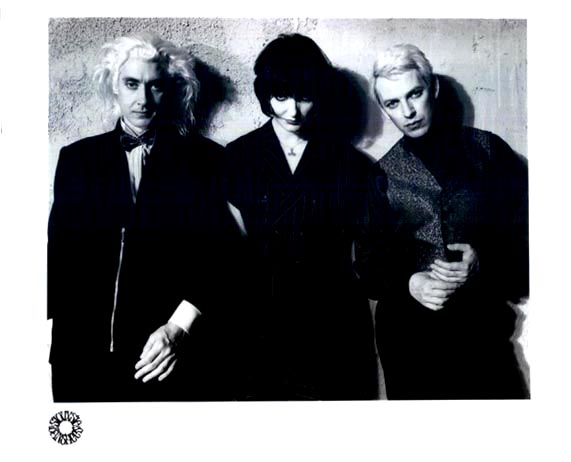 "Like
most people, we probably don't live up to our ideals. My own idea
of what a Banshee is will probably go with me to my grave. Even if
the whole group ended today, my whole 'Banshee' vision would
remain.." Steven Severin.
"Like
most people, we probably don't live up to our ideals. My own idea
of what a Banshee is will probably go with me to my grave. Even if
the whole group ended today, my whole 'Banshee' vision would
remain.." Steven Severin.
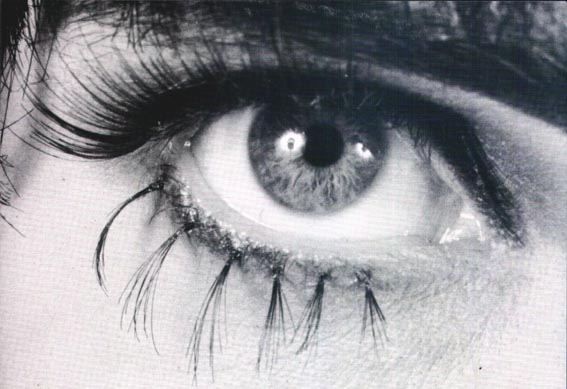 delightful
twists on its way to the current Banshees' single 'Peek A Boo', the 10
albums that lead up to the new LP, 'Peepshow', the offshoot projects
like The Creatures and The Glove, the tours of Britain and the world
with sorties into far flung territories like Brazil, the guitar players
that have come and gone while the trio of Siouxsie, Severin and drummer
Budgie (who joined in 1979) have gone their own sweet way - these are
just so many achievements on a list. 12 years in a band and on
covers of the nations press. Siouxsie & The Banshees may have
attempted the occasional foray into almost conventional behaviour - the
singles collection Once Upon A Time in 1981, the double live album
Nocturne recorded at The Royal Albert Hall in 1983, their idiosyncratic
autobiography of cover versions Through The Looking Glass of a year and
a half ago, a record designed to remind The Banshees of the pleasure of
working fast and to the point.
delightful
twists on its way to the current Banshees' single 'Peek A Boo', the 10
albums that lead up to the new LP, 'Peepshow', the offshoot projects
like The Creatures and The Glove, the tours of Britain and the world
with sorties into far flung territories like Brazil, the guitar players
that have come and gone while the trio of Siouxsie, Severin and drummer
Budgie (who joined in 1979) have gone their own sweet way - these are
just so many achievements on a list. 12 years in a band and on
covers of the nations press. Siouxsie & The Banshees may have
attempted the occasional foray into almost conventional behaviour - the
singles collection Once Upon A Time in 1981, the double live album
Nocturne recorded at The Royal Albert Hall in 1983, their idiosyncratic
autobiography of cover versions Through The Looking Glass of a year and
a half ago, a record designed to remind The Banshees of the pleasure of
working fast and to the point.